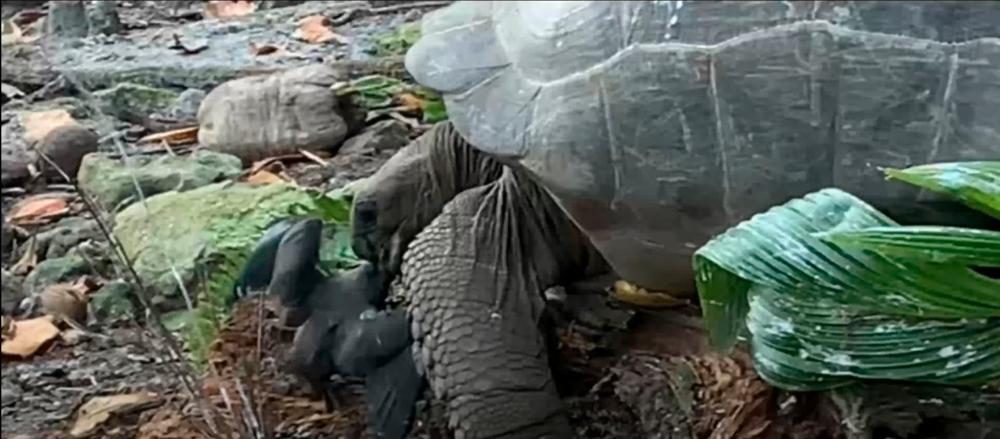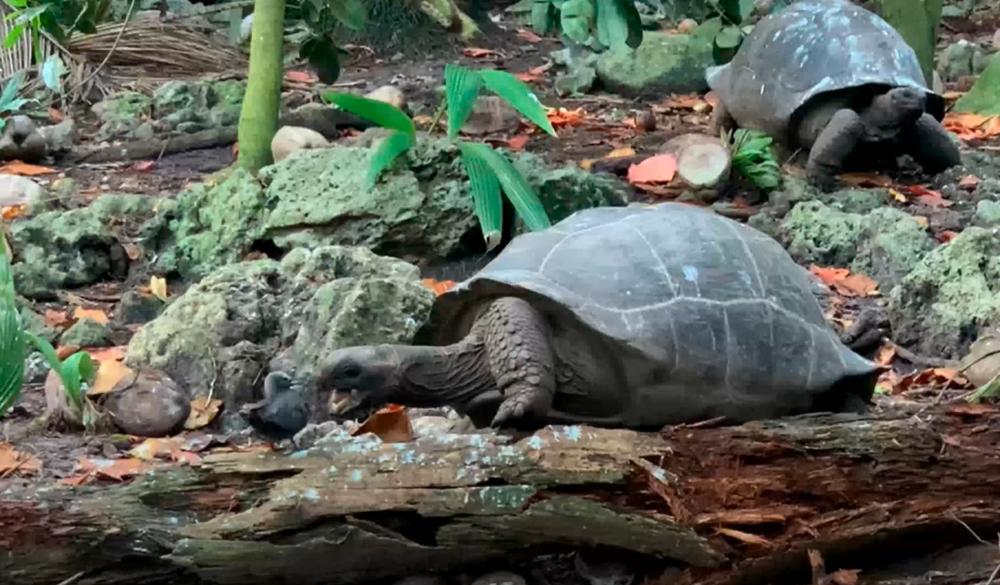Most of us are familiar with Aesop’s fable about a tortoise beating the hare by going slow and steady in a race.
Not too long ago, a surprising video revealed the same methodical approach used by a real-life tortoise to kill a prey. Tortoises are generally known to be herbivorous so the murderous act on video was a shock even to scientists.
The video shot on July 30, 2020 showed an adult female Seychelles giant tortoise slowly approaching a lesser noddy tern chick with its mouth open, which is a typical aggressive gesture.
According to Vice, the chick had fallen from its arboreal nest in the treetops and was stranded on a log. Although it backed away to the edge of the log and defended itself from the tortoise with pecks, it was all a futile effort. The larger tortoise clamped its jaws down on the bird’s head, effectively killing it.
The tortoise then climbed off the log to retrieve the dead carcass and swallowed it whole. The whole morbid interaction took place in seven minutes.

This unique observation was recorded in a study published in Current Biology. The co-author of the paper, Anna Zora, also captured the video and is Fregate Island’s deputy conservation and sustainability manager.
According to the study, the footage is the “first documented observation of a tortoise deliberately attacking and consuming another animal” and represents “an entirely novel behavioural strategy for any tortoise species.
“Studies of wild animals have not recorded any active predation by any tortoise species,” said Zora and co-author Justin Gerlach, director of biology studies at the University of Cambridge’s Peterhouse College, in the study.
“There are reports of Galapagos giant tortoises squashing birds under their carapace and we have heard of tortoises on Aldabra squashing crabs, but these are anecdotal and although it is implied that the act is deliberate, this is unclear,” the team wrote. “Our observation is the first documentation of deliberate hunting in any tortoise species.”
What caused the tortoises to change its diet? The extensive environmental restoration on the island which led to a boom in both tortoise and tern populations might have led to this eventuality.
When tern chicks fall from their tree nests, they are prey for a variety of predators such as lizards and crabs. The island’s tortoises might have simply adopted its diet to get easy meals.
“At present we do not know how extensive the behavior is on Frégate; future studies will determine whether it develops further or expands more widely in the tortoise population,” Zora and Gerlach concluded.









